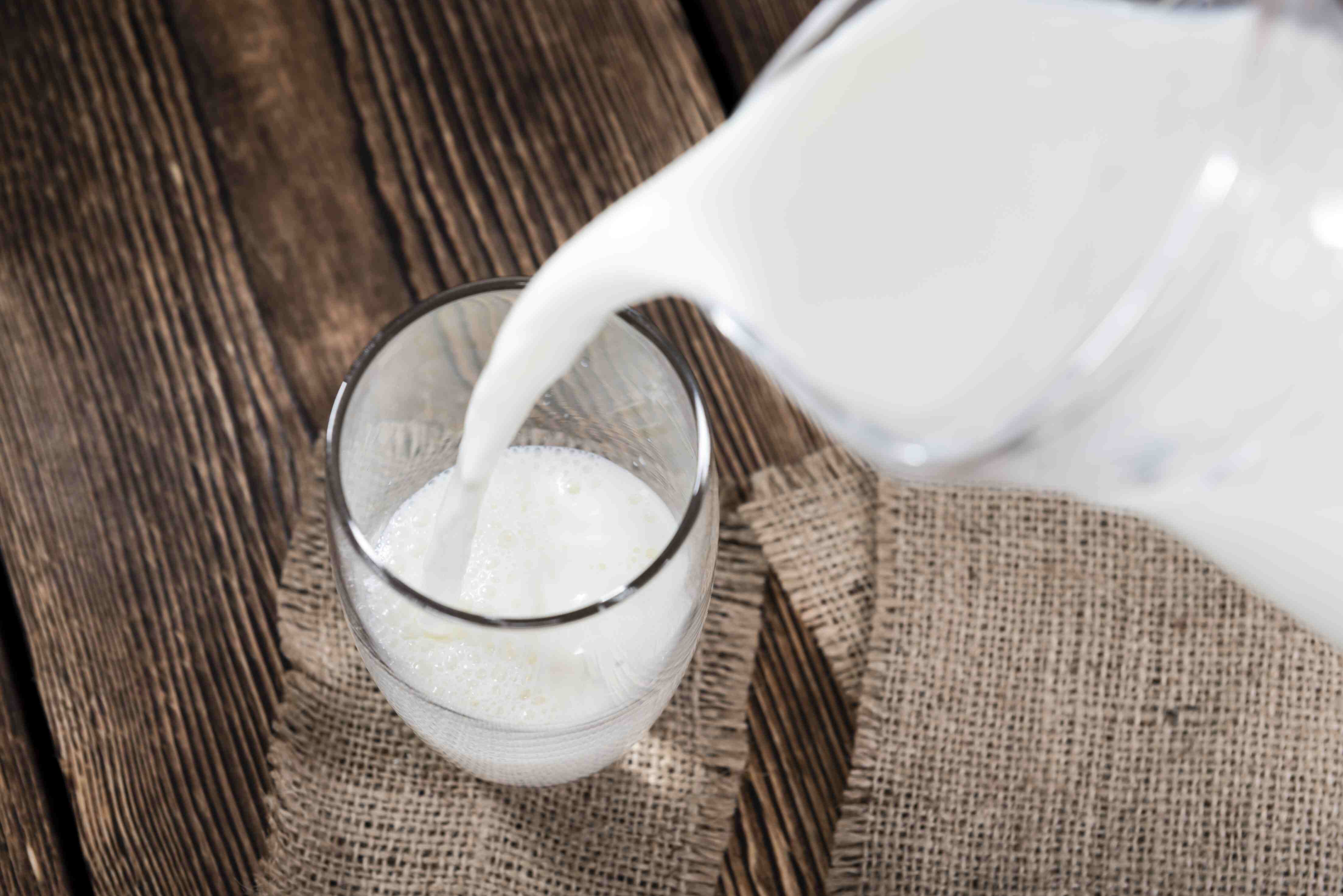Home>Furniture & Design>Interior Design Trends>How Much Calcium In A Glass Of Milk


Interior Design Trends
How Much Calcium In A Glass Of Milk
Published: February 2, 2024
Discover the latest interior design trends and get inspired to elevate your space. Stay ahead with our expert insights and tips.
(Many of the links in this article redirect to a specific reviewed product. Your purchase of these products through affiliate links helps to generate commission for Storables.com, at no extra cost. Learn more)
Importance of Calcium in the Diet
Calcium is an essential mineral that plays a crucial role in maintaining overall health and well-being. It is well-known for its significant contribution to bone health, as approximately 99% of the body's calcium is stored in the bones and teeth. However, the importance of calcium extends beyond skeletal strength, encompassing various vital functions within the body.
Read more: How Much Calcium Does A Glass Of Milk Have
1. Bone Health:
Calcium is fundamental for the development and maintenance of strong and healthy bones. Adequate calcium intake during childhood and adolescence is particularly critical for achieving optimal peak bone mass, which can help reduce the risk of osteoporosis and fractures later in life.
2. Muscle Function:
In addition to its role in bone health, calcium is essential for proper muscle function. It facilitates muscle contraction and relaxation, including the beating of the heart and the movement of skeletal muscles. Without sufficient calcium, muscle cramps and weakness may occur.
3. Nerve Transmission:
Calcium ions are involved in transmitting nerve impulses throughout the body. This process is vital for various bodily functions, including sensory perception, muscle movement, and the regulation of essential physiological processes.
4. Blood Clotting:
Calcium is a key component in the blood clotting process. When a blood vessel is injured, calcium ions aid in the formation of a blood clot to prevent excessive bleeding. This function is crucial for maintaining cardiovascular health and preventing excessive blood loss from injuries.
Read more: How Much Sugar Is In A Glass Of Milk
5. Hormone Secretion:
Calcium plays a role in the secretion of several hormones, including insulin, which is essential for regulating blood sugar levels. Proper calcium levels are necessary for the body's hormonal balance and metabolic functions.
Given its multifaceted role in the body, ensuring an adequate intake of calcium is paramount for overall health and wellness. Incorporating calcium-rich foods, such as milk, into the diet can significantly contribute to meeting the body's calcium requirements and supporting these vital physiological functions.
Key Takeaways:
- Calcium is crucial for strong bones, muscles, and nerves. Milk and its alternatives provide essential calcium, supporting overall health and well-being.
- Different types of milk offer varying calcium levels. Understanding calcium absorption factors and recommended daily intake helps maintain optimal health.
Calcium Content in Different Types of Milk
When it comes to obtaining essential nutrients, milk has long been recognized as a valuable dietary source of calcium. However, not all types of milk offer the same calcium content. Understanding the calcium levels in different varieties of milk can help individuals make informed choices to meet their nutritional needs.
1. Cow's Milk:
Cow's milk is a well-known and widely consumed source of calcium. A single cup of cow's milk typically contains around 300 milligrams of calcium, which accounts for approximately 30% of the daily recommended intake for adults. Additionally, cow's milk is often fortified with vitamin D, which aids in the absorption of calcium, further enhancing its nutritional value.
2. Almond Milk:
Almond milk, a popular alternative to traditional dairy milk, is often fortified with calcium to enhance its nutritional profile. Depending on the brand and fortification levels, a cup of almond milk can provide approximately 20-45% of the recommended daily calcium intake. It is important to select fortified almond milk to ensure a significant calcium content.
Read more: How Much Protein In A Glass Of Milk
3. Soy Milk:
Soy milk is another plant-based milk that is frequently fortified with calcium. Similar to almond milk, the calcium content in soy milk can vary based on fortification levels. On average, a cup of fortified soy milk can deliver around 30-45% of the recommended daily calcium intake, making it a valuable option for individuals seeking non-dairy sources of calcium.
4. Oat Milk:
Oat milk has gained popularity as a dairy-free alternative with a creamy texture and mild flavor. Fortified oat milk typically contains approximately 20-36% of the recommended daily calcium intake per cup. Its calcium content, along with other essential nutrients, contributes to its appeal as a nutritious beverage choice.
5. Goat's Milk:
Goat's milk, although less common than cow's milk, also provides a notable amount of calcium. With around 300 milligrams of calcium per cup, goat's milk offers a similar calcium content to cow's milk. Its distinct taste and potential benefits for individuals with dairy sensitivities or intolerances make it a viable alternative for those seeking calcium-rich options.
Understanding the varying calcium content in different types of milk empowers individuals to make informed decisions based on their dietary preferences and nutritional requirements. Whether opting for traditional cow's milk or exploring plant-based alternatives, incorporating calcium-rich milk into the diet can significantly contribute to meeting the body's calcium needs and supporting overall health.
Factors Affecting Calcium Absorption from Milk
The absorption of calcium from milk, a valuable dietary source of this essential mineral, is influenced by several factors that can impact its bioavailability within the body. Understanding these factors is crucial for optimizing calcium absorption and reaping the full nutritional benefits of consuming milk.
-
Vitamin D Presence: Vitamin D plays a pivotal role in calcium absorption. When present in adequate amounts, it enhances the body's ability to absorb calcium from the intestines, thereby promoting its utilization for various physiological functions. Many varieties of milk, including cow's milk and fortified plant-based alternatives, are enriched with vitamin D to bolster calcium absorption.
-
Calcium-to-Phosphorus Ratio: The balance between calcium and phosphorus in the diet can affect calcium absorption. An optimal calcium-to-phosphorus ratio is essential for efficient absorption and utilization of calcium. Milk, particularly cow's milk, naturally maintains a favorable calcium-to-phosphorus ratio, supporting enhanced calcium absorption.
-
Lactose Content: Lactose, the natural sugar found in milk, facilitates calcium absorption. It enhances the solubility of calcium in the intestines, promoting its uptake into the bloodstream. Individuals with lactose intolerance can opt for lactose-free milk options to mitigate potential digestive discomfort while still benefiting from the calcium content.
-
Calcium Binding: Certain compounds present in foods or beverages can bind to calcium, hindering its absorption. For instance, oxalates and phytates, found in some plant-based foods, can form complexes with calcium, reducing its bioavailability. However, the impact of these compounds on calcium absorption from milk is generally minimal, making milk an efficient source of absorbable calcium.
-
Age and Health Status: Age and overall health can influence calcium absorption. Infants, children, and individuals with specific health conditions may have varying rates of calcium absorption. Additionally, factors such as gastrointestinal health and the presence of certain medications can impact the body's ability to absorb calcium from milk and other dietary sources.
By considering these factors, individuals can make informed choices to optimize calcium absorption from milk, thereby supporting overall health and well-being. Incorporating milk into a balanced diet, alongside other calcium-rich foods, can contribute to meeting the body's calcium requirements and promoting skeletal strength, muscle function, and various physiological processes.
Read more: How Much Vitamin D In A Glass Of Milk
Recommended Daily Intake of Calcium
The recommended daily intake of calcium serves as a crucial guideline for individuals to ensure adequate consumption of this essential mineral, supporting overall health and well-being. The optimal amount of calcium needed varies across different age groups and life stages, reflecting the diverse physiological requirements for bone health, muscle function, and other vital bodily processes.
-
Infants and Children: During the first year of life, infants require approximately 200-260 milligrams of calcium per day to support the rapid growth and development of their skeletal system. As children transition into early childhood, the recommended daily intake increases to around 700-1,000 milligrams for toddlers and young children, facilitating the ongoing formation and strengthening of bones.
-
Adolescents: The adolescent years represent a critical period for bone development, with the recommended daily intake of calcium rising to approximately 1,300 milligrams for individuals aged 9-18. Adequate calcium intake during this stage is essential for achieving optimal peak bone mass, which can significantly influence bone health in later life.
-
Adults: For adults aged 19-50, the recommended daily intake of calcium typically ranges from 1,000-1,200 milligrams. This supports the maintenance of bone density and strength, as well as the various physiological functions that rely on adequate calcium levels, such as muscle function, nerve transmission, and hormone secretion.
-
Pregnant and Nursing Women: During pregnancy and lactation, women have increased calcium requirements to support fetal development and the production of breast milk. The recommended daily intake of calcium for pregnant and nursing women is approximately 1,000-1,300 milligrams, ensuring the availability of this vital mineral for both maternal and infant health.
-
Older Adults: As individuals age, maintaining sufficient calcium intake remains essential for preserving bone health and minimizing the risk of osteoporosis and fractures. The recommended daily intake for adults over 50 is around 1,200 milligrams, acknowledging the potential decline in bone density and the increased susceptibility to age-related bone conditions.
Meeting the recommended daily intake of calcium can be achieved through a balanced diet that incorporates calcium-rich foods, including dairy products, fortified plant-based alternatives, leafy greens, and other sources. Additionally, the utilization of calcium supplements may be considered for individuals who have difficulty meeting their calcium needs through diet alone, under the guidance of healthcare professionals.
By aligning with the recommended daily intake of calcium based on individual age and life stage, individuals can prioritize the maintenance of strong bones, optimal muscle function, and overall physiological well-being. This proactive approach to meeting calcium requirements contributes to long-term health and supports the body's fundamental functions throughout the lifespan.
Conclusion
In conclusion, calcium stands as a cornerstone of overall health, playing a multifaceted role in supporting bone strength, muscle function, nerve transmission, blood clotting, and hormone secretion. The significance of calcium in the diet cannot be overstated, as it influences vital physiological processes essential for maintaining well-being across various life stages.
Understanding the calcium content in different types of milk empowers individuals to make informed dietary choices. While cow's milk remains a prominent source of calcium, plant-based alternatives such as almond, soy, and oat milk offer valuable options for individuals with dietary preferences or lactose intolerance. These alternatives, when fortified with calcium and vitamin D, contribute to meeting the body's calcium requirements and supporting overall health.
Factors affecting calcium absorption from milk shed light on the intricate interplay of nutrients and physiological conditions that influence the body's utilization of calcium. By considering elements such as vitamin D presence, calcium-to-phosphorus ratio, lactose content, and individual health status, individuals can optimize calcium absorption, thereby maximizing the nutritional benefits derived from consuming milk.
The recommended daily intake of calcium serves as a pivotal guideline for individuals to prioritize their nutritional needs based on age and life stage. From infancy to older adulthood, meeting the recommended calcium intake supports bone health, muscle function, and various physiological processes, laying the foundation for long-term well-being and vitality.
In essence, incorporating calcium-rich milk into a balanced diet, alongside other sources of this essential mineral, is instrumental in meeting the body's calcium requirements and promoting overall health. Whether through traditional dairy milk or fortified plant-based alternatives, the inclusion of calcium-rich milk aligns with the pursuit of optimal nutrition and supports the body's fundamental functions throughout the lifespan.
Frequently Asked Questions about How Much Calcium In A Glass Of Milk
Was this page helpful?
At Storables.com, we guarantee accurate and reliable information. Our content, validated by Expert Board Contributors, is crafted following stringent Editorial Policies. We're committed to providing you with well-researched, expert-backed insights for all your informational needs.













0 thoughts on “How Much Calcium In A Glass Of Milk”